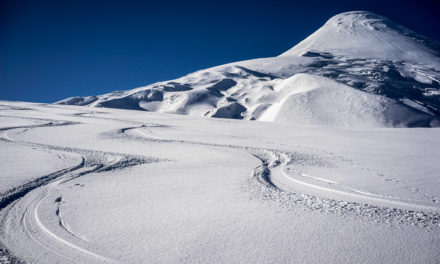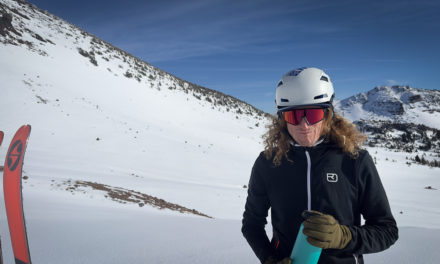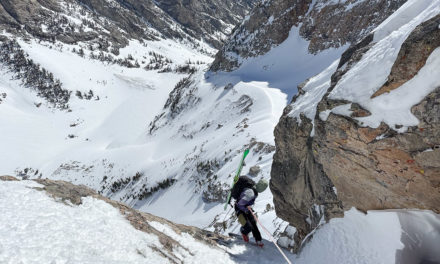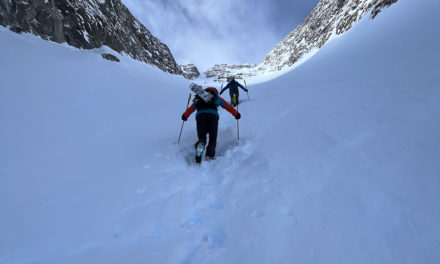Part of the skills-quiver: Building a V-thread ice anchor to facilitate safe descending while ski mountaineering.
The elegance and efficiency of ski touring often comes to a screeching halt whenever we encounter technical terrain, as we trade the simplicity of up and down tracks for anchor building, rope tangles, and shouted commands. What a bummer. One aspect of the technical bits that can satisfy even the most idealistic of mountain travelers, however, is the humble V-Thread. A tube drilled through the ice by two carefully placed screws turns out to be the simplest, strongest, and lowest impact anchor we can make. Given enough ice and a lot of patience, it’s possible to rappel an infinite distance, leaving nothing behind. Not exactly powder turns, but you have to appreciate the system.
To construct a V-thread, you don’t really need much, just an ice screw, and a small piece of wire. These tools are available commercially, but you can also make your own out of a bit of clothes hanger if you want to be frugal. For practical purposes though, if I expect to be rappelling off threads, I carry two ice screws: one 13 cm, to clip myself to, and one 17-21 cm screw, to make the thread itself. Of course, if you are rappelling, you also need the rest of the kit—rope, harness, rappel device, 120 cm sling, and a couple lockers.
Good quality ice is the single most important factor for building a good V-thread. Look for planar ice, with consistent color and no obvious air pockets or unsupported structure. A traditional thread goes on the horizontal axis, with each leg of the thread entering the ice at a 45 degree angle. As a rough guide, the two holes should be 17 cm apart, as measured with your trusty ice screw. Make one hole, and then carefully eyeball the second. A couple tips for getting it right on the first try: make a small (1 cm) divot in the correct spot to prevent your ice screw from skating across the surface and shortening the distance between the two holes, and if you are having trouble visualizing the hole left by the first screw, you can stick something in there, like a second ice screw or your v-thread tool, to make it clear where it runs. A more modern method is to orient the v-thread on the vertical axis, but keeping the same dimensions. This offers a few benefits, namely: if spindrift is running down the wall, it tends to run through the thread, rather than packing into it, and if you are careful in constructing it, while threading your cord from top to bottom you may not even need to use a hook to persuade it around the corner.
Threading requires some finesse, but it’s easy enough to get a handle on. I’ve gotten in the habit of blowing through the holes to clear any residual ice/snow out before attempting stick the cord through. For minimal waste, it’s best to thread your rope directly, without leaving cord (garbage) behind. However, occasionally the combo of wet ice and cold temperatures means that any material threading through will become hopelessly frozen and stuck, so in these cases you should leave some cord behind to avoid a “situation”! The final step before you can jump on rappel (link to rappel article), is to place a backup. In most cases, my backup will be an ice screw, placed 30 cm above the thread, and clipped to the rappel rope loosely. Loose is an important point—it is absolutely critical that your backup does not take any of the weight when you put yourself on rappel! At the same time, there ideally is not a dramatic amount of slack in the system, either—5 cm is about right.
Before each person rappels, it’s best to saw the rope back and forth a couple times to ensure that it isn’t frozen in. The last person can remove the backup, once everything has been tested. Pull your rope, stow it away, and ski onwards—with no sign of your passage other than a couple fleeting holes in the ice.
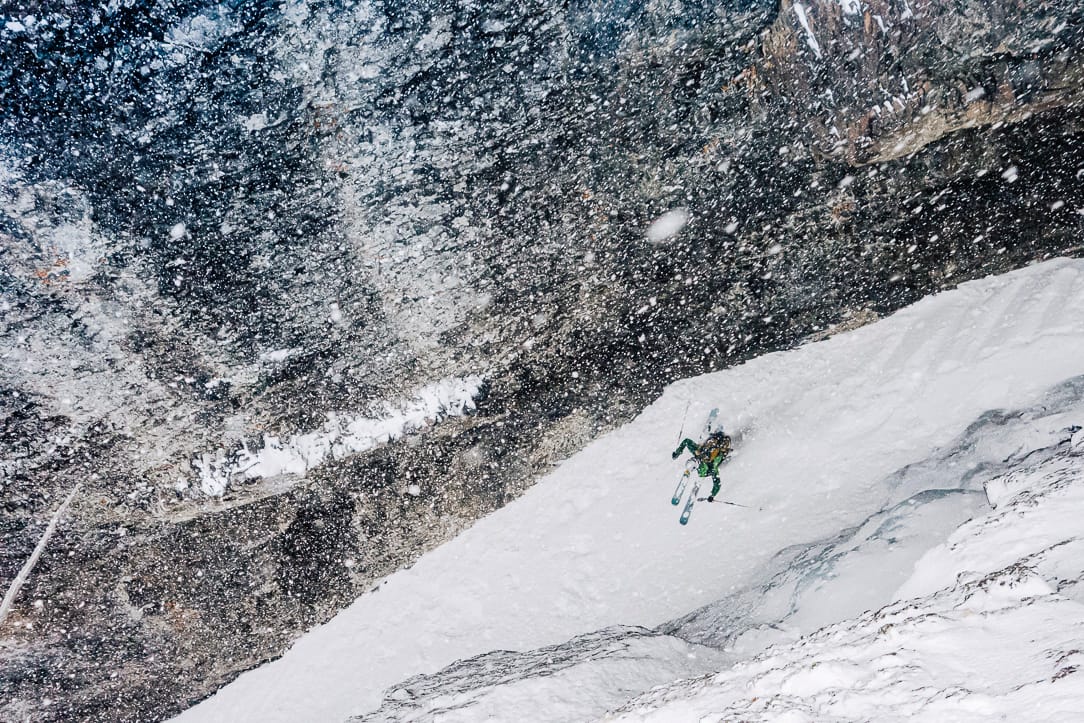
Oh the places a V-thread might take you. Post rappel, Mike Gardner enjoys the couloir skiing. Photo: Jason Thompson



